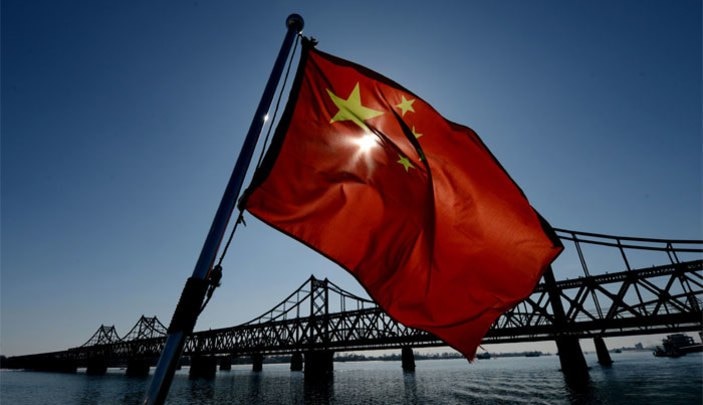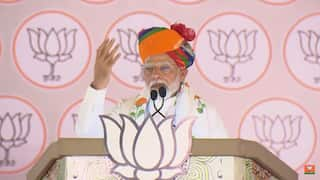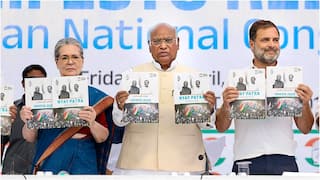Explorer
Advertisement

China's OBOR: One belt, one debt, one noose

Chinese scholars and officials spoke feelingly of “Entity diplomacy” at the third edition of the India-China Think-Tank Dialogue held in January 2016, nearly a year and a half ago.
It was held in Beijing, and all discussions veered around to the One-Belt-One-Road (OBOR) initiative. And its watery adjunct, the New Silk Route, a string of naval bases, mainly around South Asia, the South & East China Seas, and the Indian Ocean. These too are meant to be ostensibly commercial, but are likely to be covertly military, even hegemonistic.
Samir Saran and Ritika Passi of the Observer Research Foundation, in an Op-ed from February 2016, likened the “Entity” idea, somewhat disbelievingly, to an EU-like thing. It spoke of “one economic continent”.
They however cited a “lack of transparency.” Is OBOR a threat or an opportunity, they asked, ending up ticking both boxes.
The “Entity” idea was, to quote the lofty Chinese description, “engaging within and across regions to secure the best interests of an entity that is necessarily larger and with interests broader than those of any sovereign.”
Other hopeful mentions in the article, based on the assumption that China was keen to “solicit Indian partnership”, and that Beijing might become a “meaningful interlocutor prompting rational behaviour from Islamabad” have since been squarely belied.
Cut to the present. President Xi Jinping kicked off the two-day OBOR/ New Silk Route summit on Sunday May 14 by pledging to invest $124 billion, after calling it the “project of the century.”
Lest anybody is confused that this will be a cornucopia of Chinese largesse, he outlined the financing of a slew of Chinese lending banks with most of this money.
The contentious China-Pakistan-Economic Corridor (CPEC), the “flagship project” of OBOR, runs through Pakistan-occupied Kashmir and Gilgit/Baltistan, all of them Indian territories currently illegally occupied by Pakistan.
And, after cutting through the length of Pakistan, via its capital Islamabad, it ends up at Gwadar on the Arabian Gulf.
A huge port development there is located in restive Balochistan. A big province, the largest in Pakistan, is chafing under its brutal human rights abusing yoke ever since it was annexed in 1948 with British connivance.
China ignores all this, and other contradictions of China’s own positions: with regard to Taiwan, occupied Tibet, Inner Mongolia, the restive province of Xinkiang which borders PoK, and from where the CPEC begins.
President Xi, pushing his statist propaganda, gamely intoned: “All countries should respect each other’s sovereignty, dignity and territorial integrity, each other’s development paths and social systems, and each other’s core interests and major concerns.”
But by now, May 2017, Samir Saran, Vice President of the Observer Research Foundation, had dropped the reasonableness of his 2016 piece, and struck a justifiably strident note with regard to OBOR. He even blamed the UK and EU for going along with it, calling them both “complicit”.
The OBOR summit had invited 64 countries. Including itself as the 65th , the would be imperial durbar accounts for 60% of the world’s population, and 30% of its GDP, according to the Hong Kong based think-tank Fung Business Intelligence.
Finally, only 29 heads of state, (of which 20 are from the needier OBOR countries), turned up, among some 1,500 delegates.
All of West Asia and Europe did not send their top leaders.
India did not send anyone at all, because its major concerns had gone unanswered.
Beijing’s “hardline approach”, emulated increasingly by its “all-weather friend” Pakistan, as Saran points out, is not very reassuring.
China has changed the demographics in Xinkiang. In what is now only a nominally Muslim majority province, there is a 48% Uyghur Muslim population to 40% Han Chinese. And the Muslims there live with severe restrictions. The demography has been wilfully reengineered from 90% Uyghur in the 1950s.
The Han Chinese in Xinkiang now hold all the key jobs too.
Likewise, Pakistan changed a law permitting non-locals, mainly Sunnis, to buy land in Gilgit-Baltistan in 1974, in what was then a Shia majority province.
As of 2001, writes Saran, the old population ratio of 1:4 (non-locals to locals), has changed to 3:4, quoting the South Asia Intelligence Review.
Are there pointers here for what India could do for itself in the Valley?
Tibet too has seen a million natives slaughtered to make way for Han domination. And yet, the Chinese are rattled by any move from the legitimacy represented by the Dalai Lama.
Saran also worries about the future Chinese designs on Jammu & Kashmir and Ladakh. But, he doesn’t concede India’s ability to create “Himalayan hurdles” for OBOR, going forward.
Veteran journalist Prem Shankar Jha had pointed out in a March 2016 essay that, “China’s single and unswerving aim since the Bandung honeymoon ended in 1962 has been to keep India in line by periodically creating tension.”
After admiringly elaborating on China’s massive infrastructure building internally, Jha had conceded OBOR has come about because China had huge excess capacity.
India could benefit, said Jha, in chorus with the liberal-leftist refrain from other quarters, ignoring the wildly askew trade balance with China.
And by May 2017, Jha is in full spate. He suggests India is cutting its nose to spite China’s face. Why can’t India keep issuing demarches as it has been doing since the 1960s when China first built the Karakoram Highway, and muck in?
And yet, Jha writes, “China needs India to become a partner, for while the combined GDP of the seven countries in which the bulk of OBOR investments are currently envisaged, Russia, Uzbekistan, Tajikistan, Turkmenistan, Kazakhstan, Pakistan and Malaysia, was $2.1 trillion in 2015, that of India alone was 2.256 trillion.”
So, India, with a GDP presently of $2.5 trillion “could”, writes Jha, “make the difference between a quick, relatively painless recovery from its recession and a prolonged painful one”.
But why would that be India’s concern? And how does Jha’s “nose” and “face” fulmination, aimed at Prime Minister Narendra Modi’s foreign policy on China, add up?
And what has China done to assuage even one of India's concerns? Did it think, about how, in order to make OBOR viable, it needed to champion India for both the NSG and the UNSC? Did it cooperate on defining the borders, and stop making its false claims on Arunachal Pradesh?
Did it, as Saran had hoped, reign in its rogue ward Pakistan, or its India policy of a ‘thousand cuts”?
Did it broker the return of PoK and Gilgit/Baltistan to India to restore legitimacy to the CPEC?
Did it press its vassal Pakistan to grant independence to Baluchistan to secure the use of Gwadar from its rightful owners?
So, it is probably unfair to expect India not to offer “sub-conventional support for the oppressed people in Gilgit, Tibet, Xinkiang, and Inner Mongolia” as Saran puts it.
And, also, to: “intervene more directly in highlighting such issues in Balochistan.”
(Gautam Mukherjee is a blogger on politics, economics and policy. His twitter handle is @gautammuk)
Disclaimer: The opinions, beliefs and views expressed by the various authors and forum participants on this website are personal and do not reflect the opinions, beliefs and views of ABP News Network Pvt Ltd.
Follow Blog News on abp LIVE for more latest stories and trending topics. Watch breaking news and top headlines online on abp News LIVE TV
View More
Advertisement
Advertisement
Advertisement
Advertisement
Trending News

for smartphones
and tablets
and tablets



























